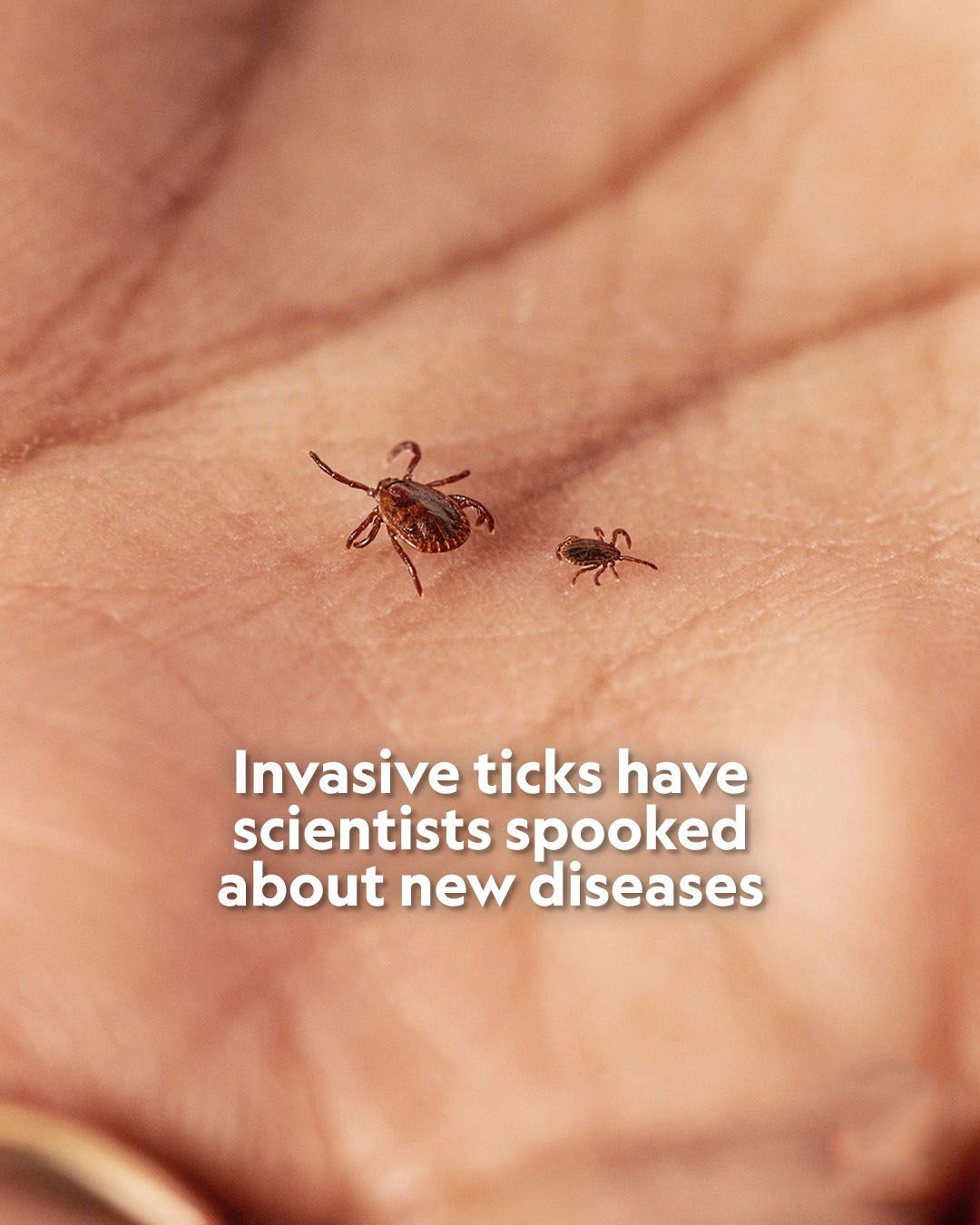Over 100 new tick species have entered the U.S. in the last 50 years. According to the scientists say it’s just the beginning.
Fro 2019 to 2023, seven ticks not native to the United States entered Connecticut, as per a new study published in the journal iScience. They came from a variety of countries as far away as Germany, Guatemala, Tanzania, Brazil, Scotland, and Poland.
Though the study didn’t find evidence of these invasive ticks bringing new diseases to the U.S., experts say they could one day soon. In the meantime, the study does suggest they could drive a rise in tick-related diseases already seen in the U.S., as they found these ticks can carry pathogens similar to those carried by native ticks.
Two invasive tick species from Central America tested positive for a bacteria similar to Rocky Mountain spotted fever, a disease that can lead to fever, vomiting, muscle pain, and even death if untreated.
It’s part of an alarming trend: cases of tick-borne disease in the U.S. jumped from about 23,000 in 2004 to around 71,000 cases in 2022.
“Prior to 2018, here in the northeastern U.S… we didn’t have cases of Rocky Mountain spotted fever. But since 2018, we are seeing a number of up to ten cases of Rocky Mountain spotted fever in [Connecticut]. And we have had mortalities as a result,” says Yale University epidemiologist Goudarz Molaei, co-author of the new study.
According to experts, identifying all the ways ticks can spread and carry diseases is critical to reducing the number of people who become seriously ill after being bitten. Their spread is a concern—during the last 50 years, over 140 non-native tick species have been brought into the U.S., hitching a ride on livestock, exotic pets, or people. At the same time, climate change has expanded the habitat ticks can live in.
If more invasive ticks establish U.S. populations, “it is just a matter of time that these invasive ticks will either pick up local pathogens or native pathogens that circulate in the U.S., or they start carrying the pathogens that they transmit in their native range,” says Molaei.
How ticks spread diseases
Ticks pick up diseases after biting animal hosts like deer. They can then transmit disease to humans by biting us.
The U.S. is home to around 50 native tick species that bite people. Those bites can result in illnesses such as Lyme disease, anaplasmosis, babesiosis, and Rocky Mountain spotted fever.
A crowdsourced and laboratory-validated tick map shows some species moving northward in recent years.
“We are seeing the increasing prevalence of pathogens in new counties, in new areas, that we never saw in 2019,” says Saravanan Thangamani, SUNY Upstate Medical University microbiologist whose research team created the tick map.
Molaei hypothesizes that not all these reported cases are “true” Rocky Mountain spotted fever, but instead a similar illness caused by the closely related bacterium R. amblyommatis—the same species the invasive ticks in the study are carrying.
“We have evidence that this bacterium is being carried by not only these invasive ticks coming from South and Central America, [but] some local ticks,” says Molaei.
The most successful invasive tick to enter the U.S. is the Asian longhorned tick, a relatively recent arrival that was first documented feeding on a sheep in New Jersey in 2017. Native to East Asia and now found in Australia, New Zealand, and the Pacific Islands, this tick has since spread to at least 21 U.S. states and Washington D.C. and carries pathogens responsible for various diseases that native U.S. ticks carry.
But a tick testing positive for a pathogen doesn’t necessarily mean it’s capable of transmitting that pathogen to humans, says Molaei.
“Investigations are ongoing to find out exactly to what extent [the Asian longhorned tick] bites humans, and what disease agents this tick will transmit,” says Molaei.
“Some of the early fears [about longhorned ticks] have not seemed to come to be realized,” Bryon Backenson, director of the Bureau of Communicable Disease Control at the New York State Department of Health. He adds that disease spread depends on ticks finding the right host and conditions: “Finding a pathogen in the tick is different from whether or not the tick can actually transmit it.”
New diseases in animals, but not humans (yet)
“To my knowledge there has not been a human clinical case acquired in the U.S. from an introduced tick,” says Risa Pesapane, Ohio State University disease ecologist. However, the longhorned tick did bring a non-native parasite called Theileria orientalis that can cause bovine theileriosis in cattle, says Pesapane, now widespread and dangerous for livestock health. And invasive ticks that arrived in Florida through the reptile pet trade now feed on native reptiles, adds Pesapane.
And climate change is predicted to create a hospitable environment for some warm-weather ticks that may not have been able to survive in a U.S. climate before, enabling tick populations to move farther north. “One degree is a lot for [ticks]. One degree allows them to move way further north than they would otherwise,” says Backenson.
Also, climate change means shorter winters, so both ticks and humans are active for more of the year. “We are seeing longer seasons where more ticks are active… and this generally means there are more days of the year where people are out wearing shorts and sandals and potentially encountering ticks,” says Pesapane.
One dangerous virus Thangamani points to is tick-borne encephalitis, which ticks carry in Europe and Asia and can be fatal. Although very few cases have been reported in travelers returning to the U.S., Thangamani claims if those ticks and pathogens were to establish themselves in the U.S., it would be a major threat to human health.
“Ticks are very resilient,” says Thangamani, adding that after feeding, a female tick can lay thousands of eggs. “All you need is one tick to establish a population in an area.”
Preventing tick-borne disease
Though it’s unclear how risky invasive tick species are, it is something scientists are monitoring, says Hannah Tiffin, entomologist at the University of Kentucky.
“It’s something that we could do a better job with,” Tiffin says, suggesting better coordination among public health officials and scientists to identify ticks and pathogens before they spread.
Thangamani recommends using the tick map to see where you might be most at risk of getting a tick bite. His research team is also encouraging health care providers to refer to the map, so doctors can take it into account when treating patients with tick bites.
(Ticks are taking over city parks. Here’s how to avoid them.)
Travelers should let their doctors know of recent travel if receiving treatment for a tick bite, since some invasive and native ticks look similar, says Tiffin; without knowing a patient’s recent travel history, it’s easy to visually misidentify a tick species.
If hiking near home or abroad, wear protective clothes, use insect repellent, and stay away from tick-infested areas. Before returning to the U.S., Thangamani recommends travelers diligently check their bodies, clothes, and luggage.
He adds: “It is very easy to introduce a new species without us knowing it’s happening.”

















